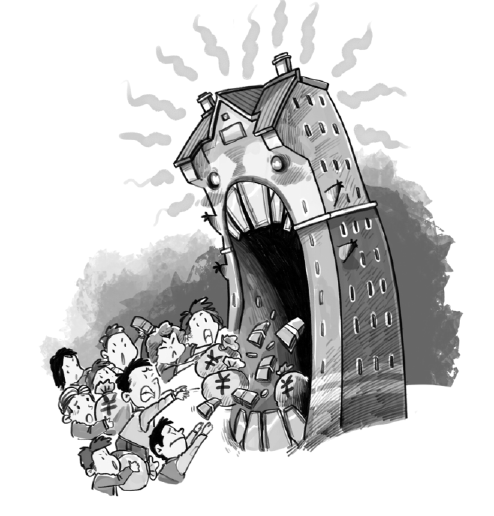How property market frenzy can be curbed
 |
|
CAI MENG/CHINA DAILY |
Housing starts are rising again, responding to an earlier rise in housing sales that also increased housing prices. The renewed enthusiasm in real estate has been key in supporting GDP growth and heavy industry sectors such as steel.
But the recovery has been uneven, with signs of a price bubble emerging in some, mostly large, cities while inventories remain high in others. Property prices in tier-one cities and some tier-two cities have risen sharply since early 2015.
In Shenzhen and Shanghai, they were on average about 38 percent higher in August than a year ago-in Shenzhen the year-on-year increase had even reached 67 percent earlier in 2016, before the local government took measures to restrict housing purchases. Shanghai has also taken such measures, as did several other cities. But it seems that, in response to such restrictions, the rally has spread to other cities close by. The rally has also spread to the land market, with prices at auctions breaking new records.
At the same time, many third- and fourth-tier cities are still struggling to digest high inventories of unsold housing. Indeed, the demand-supply situation in most of the smaller cities remains very different from that in the large ones, with many developers having over-built without assessing real demand.
Developments in the tier-one cities tend to get the limelight and can have spillover effects. But since construction and sales in the smaller cities make up the bulk of the nationwide total, the situation there is more representative for the overall property sector and thus also key for nationwide policymaking.
Macroeconomic policy easing is an important reason for the recovery in housing sales since early 2015. Interest rates were cut six times since mid-2014, and the reserve requirement ratio five times. Also, early this year minimum down payment requirements were cut nationwide as the government sought to encourage mortgage lending to spur sales and reduce the high unsold housing inventories. Indeed, residential mortgage lending has been rising by about 30 percent on the year in recent months, accounting for the bulk of total new banking lending. And amid easy overall liquidity conditions, real estate lending by other intermediaries has flourished.
The frenzy in tier one-cities' housing markets is in no small part a manifestation of China's overly rapid credit growth policy. As in other parts of the economy, the unsustainably rapid credit growth deployed to meet overly ambitious GDP growth targets is leading to misallocation and financial risks in the property market.
While overall credit growth should be reined in, specific nationwide steps to contain the housing market frenzy and tame excessive financial inflows into the property sector can be taken as well, including higher minimum down payments for mortgages. It also makes sense for local governments to tighten demand in the overheated cities by means of further city-specific housing purchase restrictions, as well as to increase land supply.
Policymakers do not need to worry too much about such measures having excessive impact on the real economy. The fact that loan-to-value ratios remain modest, overall, limits the risk of large numbers of households running into trouble if housing prices fall.
More importantly, a relatively cautious attitude of developers during the current sales recovery and significant destocking since early 2016 mean that construction does not have to adjust as much to a sales slowdown as in 2014.
In cities still struggling with oversupply of unsold housing, there is no magic bullet. That inventory will have to come down organically and meanwhile it will weigh on real estate construction. But markets should be allowed to play a larger role in solving oversupply. One important way is to tighten budget constraints of weak property developers and their access to finance. In all, the policy prescription for the housing market looks a lot like that for the overall economy: rein in lending and excesses while pursuing market-oriented structural reforms to reduce excess supply.
The author is head of Asia economics at Oxford Economics.

























